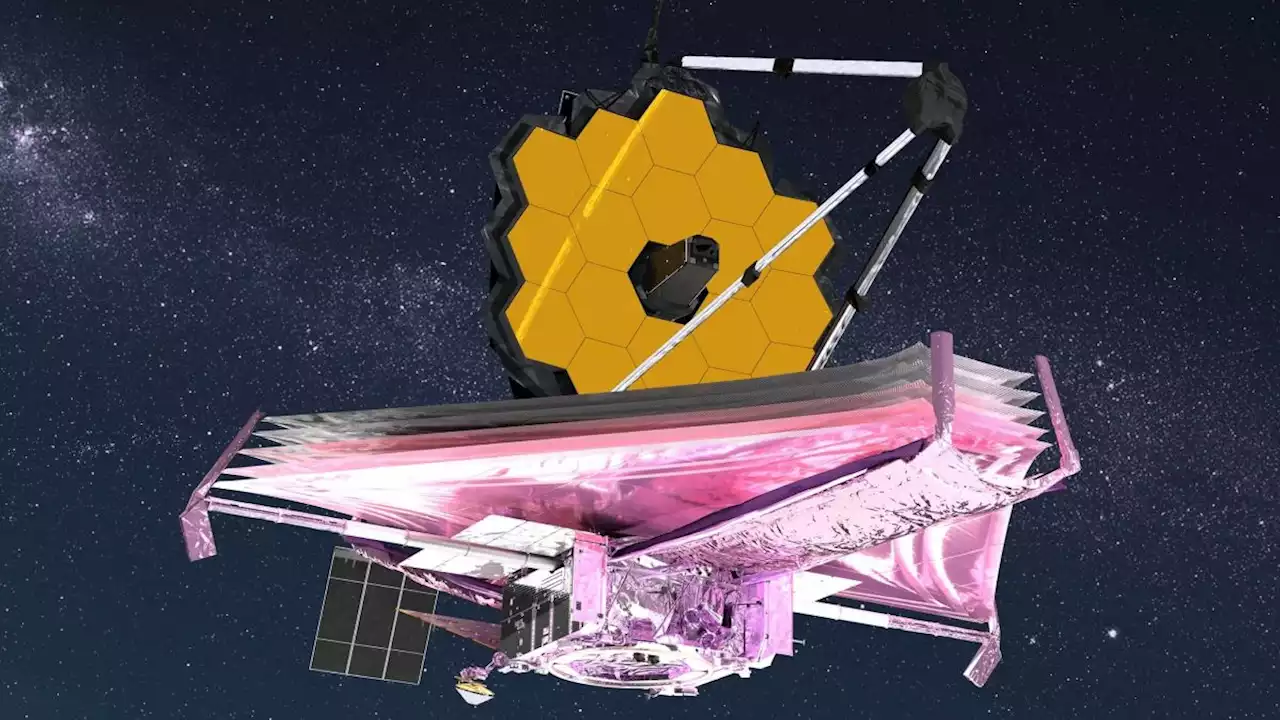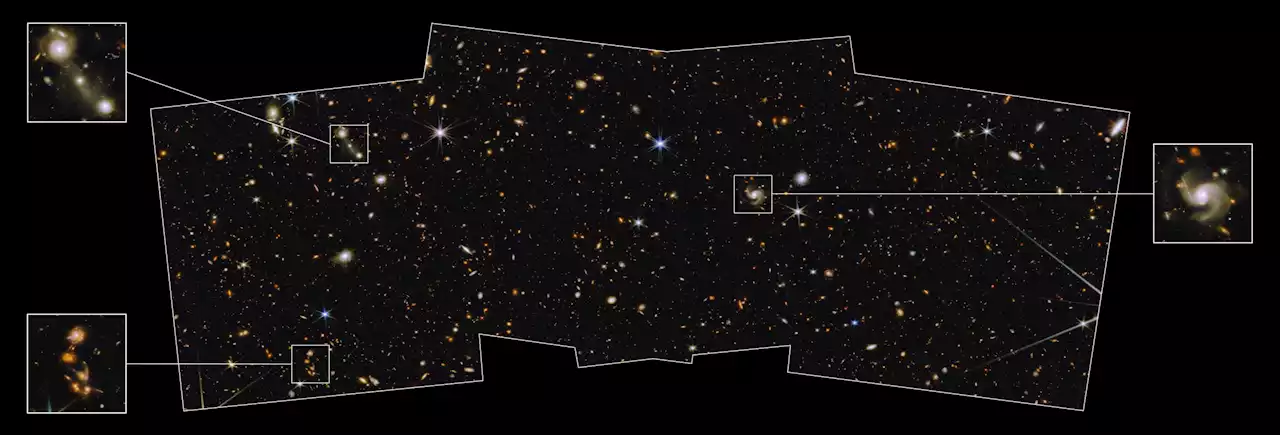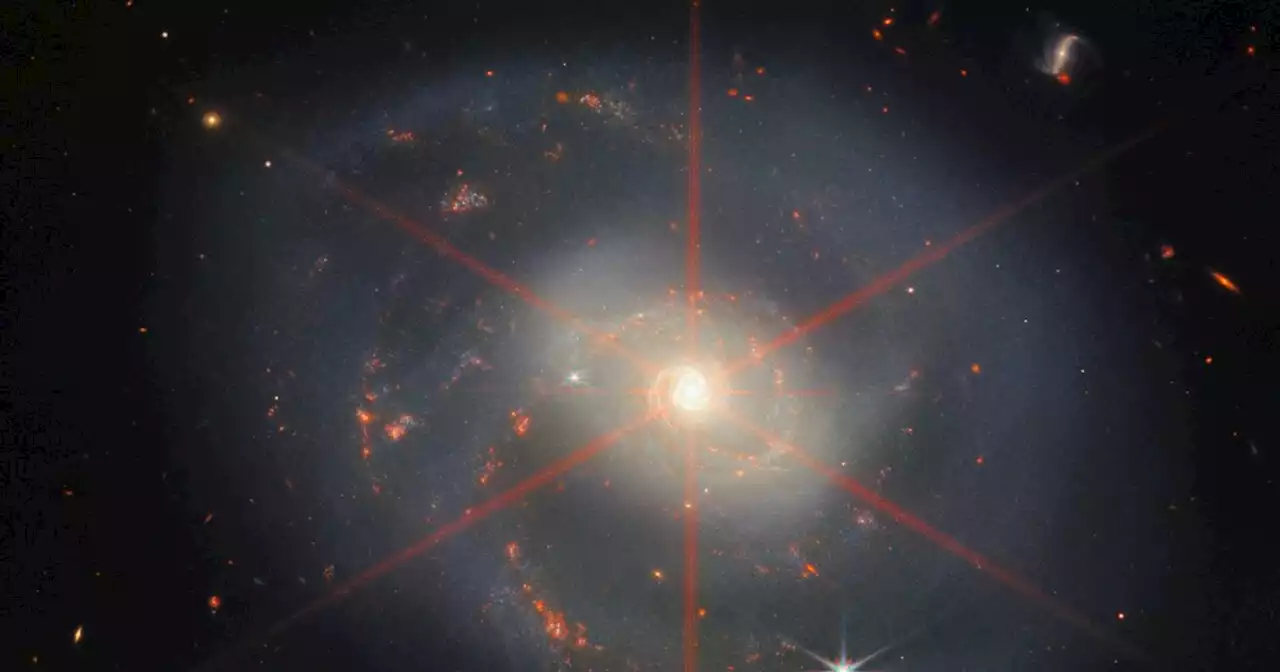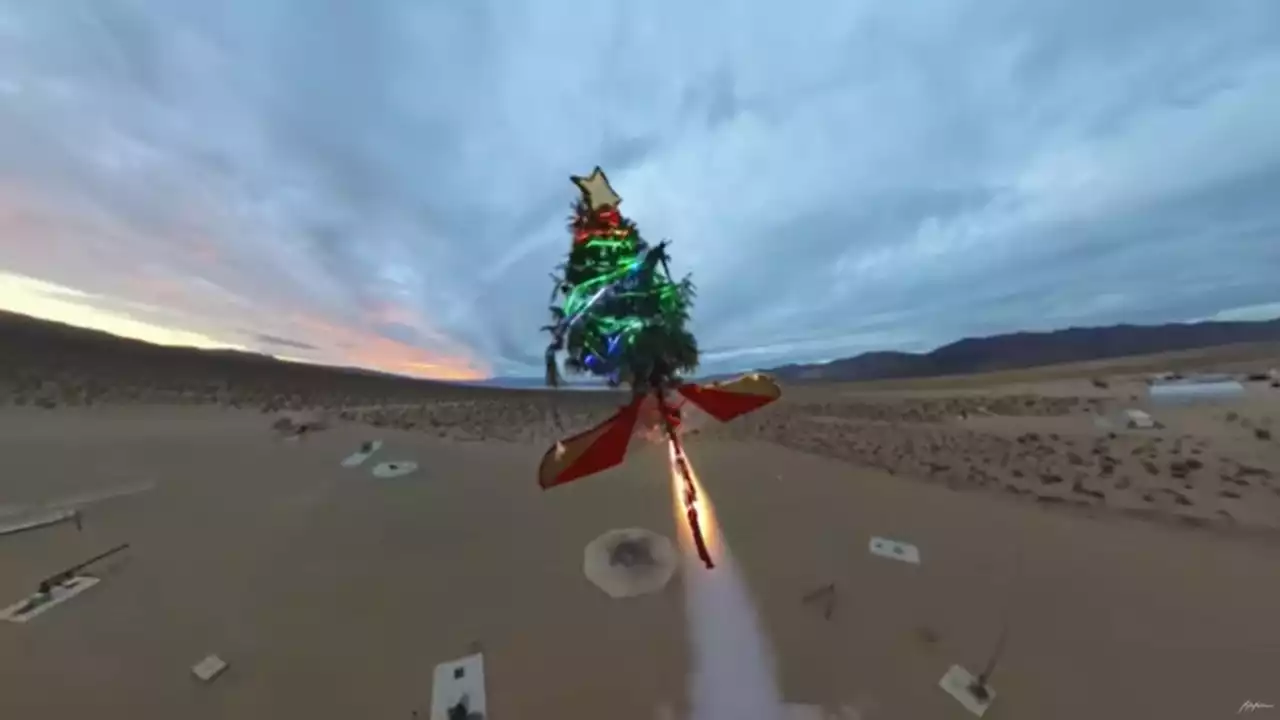The James Webb Space Telescope was launched last Christmas Day. In the year since then, it has captured — in stunning detail — stars, planets and galaxies that were previously unobservable.
James Webb Space Telescope launched on December 25, 2021. Its first images - like this one of the Carina Nebula - stunned researchers.James Webb Space Telescope launched on December 25, 2021. Its first images - like this one of the Carina Nebula - stunned researchers."JWST was launched on Christmas day, and then was a present that took six months to unwrap," said Jane Rigby, an astronomer at NASA and the Operations Project Scientist.
The telescope is only five months into its science mission, and it's already transforming astronomy. The telescope's instruments have allowed it to capture previously unobservable planets, stars and galaxies near and far. "I've been looking at simulated data, trying to mimic what JWST would see, for many years now. So when I first saw the data, it was like stepping out of a virtual reality into the real world," said Brant Robertson, a professor of astronomy and astrophysics at the University of California, Santa Cruz.Robertson is on a team of researchers who discovered the oldest galaxies ever observed. JWST's instruments allowed his team to identify galaxies up to 13.
Robertson said that, while older telescopes like Hubble gave astronomers a glimpse of what was out there, JWST has expanded the scope of what kind of science is possible. Webb captures the image of a protostar, the very beginning of a new star. The"hourglass" of dust and gas clouds is only visible in infrared light, the wavelengths Webb specializes in.Webb captures the image of a protostar, the very beginning of a new star. The"hourglass" of dust and gas clouds is only visible in infrared light, the wavelengths Webb specializes in."Pretty much everything we're doing wasn't possible before this telescope," Rigby said.
JWST has already proven to be an incredible tool for astronomers, but its biggest discoveries are still yet to come, Rigby said.
United States Latest News, United States Headlines
Similar News:You can also read news stories similar to this one that we have collected from other news sources.
 10 incredible James Webb Space Telescope images reveal the wonders of the universeThe Hubble telescope continues to be a great scientific instrument and can see at optical wavelengths where the JWST cannot. But the Webb telescope can see much further into the infrared with greater sensitivity and sharpness.
10 incredible James Webb Space Telescope images reveal the wonders of the universeThe Hubble telescope continues to be a great scientific instrument and can see at optical wavelengths where the JWST cannot. But the Webb telescope can see much further into the infrared with greater sensitivity and sharpness.
Read more »
 James Webb Space Telescope's 1st year in space has blown astronomers awayKeith Cooper is a freelance science journalist and editor in the United Kingdom, and has a degree in physics and astrophysics from the University of Manchester. He's the author of 'The Contact Paradox: Challenging Our Assumptions in the Search for Extraterrestrial Intelligence' (Bloomsbury Sigma, 2020) and has written articles on astronomy, space, physics and astrobiology for a multitude of magazines and websites.
James Webb Space Telescope's 1st year in space has blown astronomers awayKeith Cooper is a freelance science journalist and editor in the United Kingdom, and has a degree in physics and astrophysics from the University of Manchester. He's the author of 'The Contact Paradox: Challenging Our Assumptions in the Search for Extraterrestrial Intelligence' (Bloomsbury Sigma, 2020) and has written articles on astronomy, space, physics and astrobiology for a multitude of magazines and websites.
Read more »
 Webb Space Telescope Captures North Ecliptic Pole – Studded With Galactic DiamondsNASA’s James Webb Space Telescope has captured one of the first medium-deep wide-field images of the cosmos, featuring a region of the sky known as the North Ecliptic Pole. The image, which accompanies a paper published on December 14 in the Astronomical Journal, is from the Prime Extragalactic Area
Webb Space Telescope Captures North Ecliptic Pole – Studded With Galactic DiamondsNASA’s James Webb Space Telescope has captured one of the first medium-deep wide-field images of the cosmos, featuring a region of the sky known as the North Ecliptic Pole. The image, which accompanies a paper published on December 14 in the Astronomical Journal, is from the Prime Extragalactic Area
Read more »
 Webb Space Telescope Makes Stunning Discovery: Unveils Previously Shrouded Newborn StarsWebb’s infrared camera peers through dust clouds, enabling discovery. Rice University astronomer Megan Reiter and colleagues took a “deep dive” into one of the first images from NASA’s James Webb Space Telescope and were rewarded with the discovery of telltale signs from two dozen previously unseen
Webb Space Telescope Makes Stunning Discovery: Unveils Previously Shrouded Newborn StarsWebb’s infrared camera peers through dust clouds, enabling discovery. Rice University astronomer Megan Reiter and colleagues took a “deep dive” into one of the first images from NASA’s James Webb Space Telescope and were rewarded with the discovery of telltale signs from two dozen previously unseen
Read more »
 James Webb image shows the bright glowing heart of a galaxy | Digital TrendsAstronomers recently shared a stunning new image of space from the James Webb Space Telescope, showing a galaxy with an unusually bright heart.
James Webb image shows the bright glowing heart of a galaxy | Digital TrendsAstronomers recently shared a stunning new image of space from the James Webb Space Telescope, showing a galaxy with an unusually bright heart.
Read more »
 Watch an epic Christmas tree launch for the holidays by DIY 'Rocket-tree' makers (videos)Tariq is the Editor-in-Chief of Space.com and joined the team in 2001, first as an intern and staff writer, and later as an editor. He covers human spaceflight, exploration and space science, as well as skywatching and entertainment. He became Space.com's Managing Editor in 2009 and Editor-in-Chief in 2019. Before joining Space.com, Tariq was a staff reporter for The Los Angeles Times covering education and city beats in La Habra, Fullerton and Huntington Beach. In October 2022, Tariq received the Harry Kolcum Award for excellence in space reporting from the National Space Club Florida Committee. He is also an Eagle Scout (yes, he has the Space Exploration merit badge) and went to Space Camp four times as a kid and a fifth time as an adult. He has journalism degrees from the University of Southern California and New York University. You can find Tariq at Space.com and as the co-host to the This Week In Space podcast with space historian Rod Pyle on the TWiT network. To see his latest project, you can follow Tariq on Twitter tariqjmalik.
Watch an epic Christmas tree launch for the holidays by DIY 'Rocket-tree' makers (videos)Tariq is the Editor-in-Chief of Space.com and joined the team in 2001, first as an intern and staff writer, and later as an editor. He covers human spaceflight, exploration and space science, as well as skywatching and entertainment. He became Space.com's Managing Editor in 2009 and Editor-in-Chief in 2019. Before joining Space.com, Tariq was a staff reporter for The Los Angeles Times covering education and city beats in La Habra, Fullerton and Huntington Beach. In October 2022, Tariq received the Harry Kolcum Award for excellence in space reporting from the National Space Club Florida Committee. He is also an Eagle Scout (yes, he has the Space Exploration merit badge) and went to Space Camp four times as a kid and a fifth time as an adult. He has journalism degrees from the University of Southern California and New York University. You can find Tariq at Space.com and as the co-host to the This Week In Space podcast with space historian Rod Pyle on the TWiT network. To see his latest project, you can follow Tariq on Twitter tariqjmalik.
Read more »
